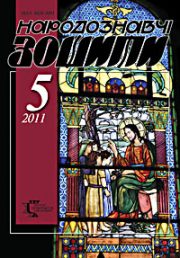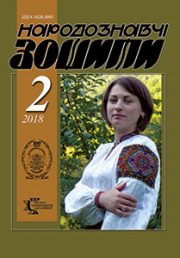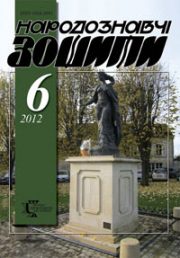The Ethnology Notebooks. 2020. # 6 (156), 1297—1302
УДК 73/75.011.036(477)(092)Грабар
DOI https://doi.org/10.15407/nz2020.06.1297
Roman YATSIV
- ORCID ID: https://orcid.org/0000-0003-1509-5367
- vice-rector of Lviv National Academy of Arts,
- Candidate of Art Criticism, professor
- Kubіyovich Street, 38, 79011, m. Lviv, Ukraine,
- e-mail: jaciv@ukr.net
IN ANCESTRY PROJECTION: DARIY HRABAR
The article deals with the work of the famous contemporary artist and teacher Dariy Hrabar, whose aesthetic worldview is revealed in various types and forms of fine and decorative-monumental art. The syncretic formal and figurative thinking of the artist is determined at the junction of folk art and active stylistic findings, which have been equally conducted on the vector of monumental painting, easel painting and graphics, as well as wood art. D. Hrabar has an interest in ethno-regional features of traditions, in which he has usually found answers to current problems of plastic form. Paying tribute to his eminent professors – presently the classics of Ukrainian art (R. Selskyi, I. Severa, D. Krvavych, M. Kurylych, M. Yatsiv, etc.), the artist has developed in his work basic ideas of national late modernism. During the 1970-1980’s, under totalitarianism, D. Hrabar systematically developed a methodology of synthetic (decorative-generalizing form), despite the limitations in creative freedom, adapting it to his works of various genres and themes.
The relevance of the topic of the article lies in the first attempt in art history to systematize and scientifically interpret great creative work of the artist. The aim of the research is to highlight the question of D. Hrabar’s aesthetic worldview in the projection of moral and value imperative, the author’s understanding of the concept of “cultural memory”, the action of his own existence. The object of the research is a practical experience of the artist in the main creative fields: wood art, monumental art, easel painting and graphics, the subject is the formal language of works, their syncretic and semantic nature. The methodological basis of the article is structural-typological and formal-analytical methods, culturological approach in revealing the specifics of individual thinking of the artist.
Keywords: fine arts, decorative and monumental art, graphics, painting, Dariy Hrabar, structure of creativity, aesthetic worldview, syncretic nature of creativity, semantic field, formal and figurative means, plastic and figurative ideas, painting strategy.







